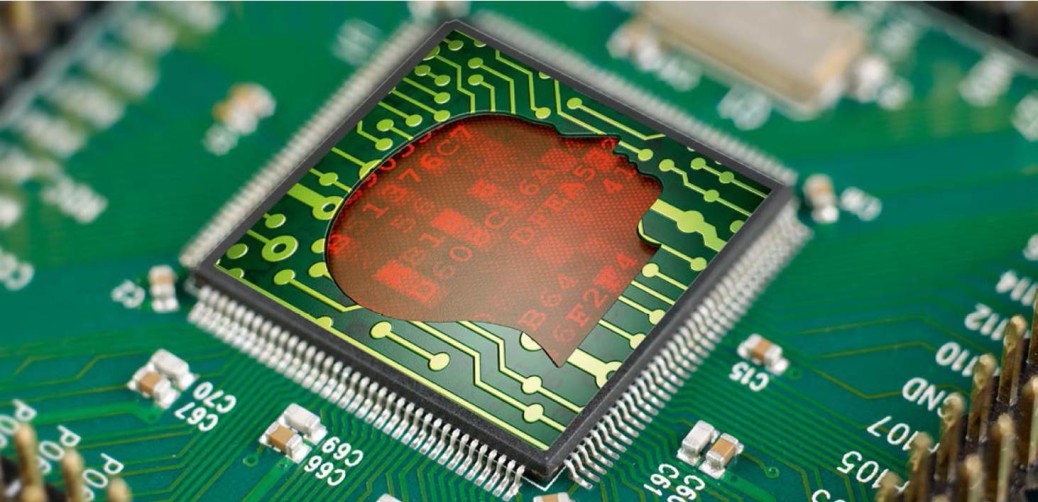Next Generation Memory Market Share, Size, Trends, Growth Factors, and Forecast 2025-2033

Strong 8k brings an ultra-HD IPTV experience to your living room and your pocket.
IMARC Group’s latest report, titled “Next Generation Memory Market Report by Technology (Non-Volatile, Volatile), Wafer Size (200 mm, 300 mm, 450 mm), Storage Type (Mass Storage, Embedded Storage, and Others), Application (BFSI, Consumer Electronics, Government, Telecommunications, Information Technology and Others), and Region 2025-2033”, offers a comprehensive analysis of the next generation memory market. The report also includes competitor and regional analysis, along with a breakdown of segments within the industry. the global next generation memory market size reached USD 7.6 Billion in 2024. Looking forward, IMARC Group expects the market to reach USD 47.7 Billion by 2033, exhibiting a growth rate (CAGR) of 22.51% during 2025-2033.
Latest Trends in the Next Generation Memory Market:
The Next Generation Memory market is evolving rapidly, fueled by breakthroughs in memory technologies that offer greater speed, efficiency, and scalability compared to traditional memory solutions like DRAM and NAND flash. One of the most prominent trends is the rise of non-volatile memory (NVM) technologies, particularly the development of storage-class memory (SCM). SCM, including technologies such as Intel’s Optane and Micron’s 3D XPoint, offers a unique blend of high-speed data processing and persistent storage, enabling faster data access and improving overall system performance. This trend is further amplified by the increasing demand for high-performance computing (HPC) applications, such as artificial intelligence (AI), machine learning, and big data analytics, where speed and low latency are crucial. Additionally, emerging memory technologies like magnetoresistive random-access memory (MRAM), phase-change memory (PCM), and resistive random-access memory (ReRAM) are gaining traction due to their potential to replace or complement existing memory types, offering enhanced durability, energy efficiency, and faster read/write speeds. As the Internet of Things (IoT), 5G, and edge computing continue to expand, the need for advanced memory solutions that can handle large volumes of data, provide fast processing, and consume less power is driving the demand for next-generation memory technologies.
Growth Drivers of the Next Generation Memory Market:
The growth of the Next Generation Memory market is primarily driven by the exponential increase in data generation and the need for faster, more efficient memory systems to process this data. As industries continue to embrace digital transformation, memory solutions capable of supporting increasingly complex applications are in high demand. The rise of AI and machine learning, in particular, is a major growth driver, as these technologies require massive amounts of high-speed memory to perform real-time data processing and model training. Additionally, the expansion of cloud computing and data centers is driving the need for high-capacity, low-latency memory systems to handle the growing volume of data traffic. The proliferation of IoT devices is another significant factor contributing to market growth, as these devices require fast and reliable memory for data processing at the edge. Furthermore, next-generation memory technologies are crucial in addressing the limitations of current memory solutions in terms of speed, scalability, and energy efficiency. The automotive sector is also contributing to market growth, particularly with the rise of autonomous vehicles, which require advanced memory solutions for real-time data processing, navigation, and decision-making. As these trends continue to evolve, the demand for next-generation memory technologies is expected to accelerate, driven by the need for improved performance, power efficiency, and reliability.
Future Demand for Next Generation Memory:
The future demand for next-generation memory technologies is poised for rapid growth, driven by continuous advancements in technology and the increasing need for high-performance memory solutions across various industries. As industries such as AI, cloud computing, and IoT continue to expand, there will be an increasing reliance on memory systems capable of handling vast amounts of data with minimal latency and high throughput. The ongoing development of next-generation memory technologies, such as MRAM, PCM, and ReRAM, is expected to meet these demands, offering solutions with faster read/write speeds, improved endurance, and lower power consumption compared to traditional memory types. The growing emphasis on edge computing and the need for real-time data processing will further boost the demand for memory solutions that are both fast and energy-efficient. In addition, the continued evolution of smart devices, including wearables and autonomous vehicles, will require advanced memory systems capable of supporting more complex applications and faster data access. The shift towards 5G networks will also contribute to the demand for advanced memory solutions, as the technology will enable faster data transmission and processing speeds, further driving the need for high-performance memory. With these factors in play, the next-generation memory market is poised for robust growth in the coming years, offering opportunities for innovation and technological advancement.
Leading key Players Operating in the Next Generation Memory Industry:
- Avalanche Technology
- Crossbar Inc
- Fujitsu Limited
- Honeywell International Inc
- Infineon Technologies AG
- Intel Corporation
- Micron Technology Inc
- Nantero Inc
- Samsung Electronics Co. Ltd
- SK hynix Inc
- Spin Memory Inc
- Taiwan Semiconductor Manufacturing Co. Ltd
Next Generation Memory Market Trends:
The Next Generation Memory market is witnessing a surge in innovation as demand for faster, more efficient, and scalable memory solutions grows across industries. One key trend is the rapid development of non-volatile memory technologies, which combine the speed of DRAM with the persistence of NAND flash. Technologies such as Intel’s Optane and 3D XPoint are becoming increasingly popular, offering a new class of memory solutions that bridge the gap between memory and storage. Additionally, there is growing interest in alternative memory technologies, such as MRAM, PCM, and ReRAM, which promise to offer superior performance, energy efficiency, and endurance compared to traditional memory types. The rise of edge computing and the continued expansion of IoT devices are further fueling the demand for memory solutions that can support real-time data processing with low latency.
Moreover, AI and machine learning applications are driving the need for memory systems that can handle large datasets and provide rapid access to critical information. As data generation continues to soar and new technologies like 5G and autonomous vehicles become more widespread, next-generation memory solutions are expected to play a crucial role in enabling high-performance, low-latency, and power-efficient systems across various industries.
Key Market Segmentation:
Breakup by Technology:
- Non-Volatile
- Magneto-Resistive Random-Access Memory (MRAM)
- Ferroelectric RAM (FRAM)
- Resistive Random-Access Memory (ReRAM)
- 3D Xpoint
- Nano RAM
- Other Non-Volatile Technologies (Phase change RAM, STT-RAM, and SRAM)
- Volatile
- Hybrid Memory Cube (HMC)
- High-Bandwidth Memory (HBM)
Breakup by Wafer Size:
- 200 mm
- 300 mm
- 450 mm
Breakup by Storage Type:
- Mass Storage
- Embedded Storage
- Others
Breakup by Application:
- BFSI
- Consumer Electronics
- Government
- Telecommunications
- Information Technology
- Others
Breakup by Region:
- North America (United States, Canada)
- Europe (Germany, France, United Kingdom, Italy, Spain, Others)
- Asia Pacific (China, Japan, India, Australia, Indonesia, Korea, Others)
- Latin America (Brazil, Mexico, Others)
- Middle East and Africa (United Arab Emirates, Saudi Arabia, Qatar, Iraq, Other)
Key Highlights of the Report:
- Market Performance (2019-2024)
- Market Outlook (2025-2033)
- Porter’s Five Forces Analysis
- Market Drivers and Success Factors
- SWOT Analysis
- Value Chain
- Comprehensive Mapping of the Competitive Landscape
About Us:
IMARC Group is a leading market research company that offers management strategy and market research worldwide. We partner with clients in all sectors and regions to identify their highest-value opportunities, address their most critical challenges, and transform their businesses.
IMARC’s information products include major market, scientific, economic and technological developments for business leaders in pharmaceutical, industrial, and high technology organizations. Market forecasts and industry analysis for biotechnology, advanced materials, pharmaceuticals, food and beverage, travel and tourism, nanotechnology and novel processing methods are at the top of the company’s expertise.
Contact Us:
IMARC Group
134 N 4th St. Brooklyn, NY 11249, USA
Email: [email protected]
Tel No:(D) +91 120 433 0800
United States: +1-631-791-1145
Note: IndiBlogHub features both user-submitted and editorial content. We do not verify third-party contributions. Read our Disclaimer and Privacy Policyfor details.



